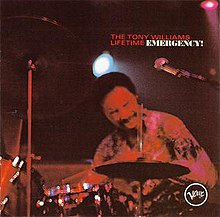ASSIGNED BY THE HOST: Great Compilation Albums
Review by: Jaime Vargas Sánchez
Something sounds while you walk by. It will keep sounding even when you are not there, and your mind will have been attracted to something else.
Or maybe not. Maybe your mind is still remembering and playing with what you heard earlier.
In the classical music paradigm, a musical piece was something that developed in time. It went to places. It changed, evolved, and in the apex of the symphonic language’s growth in the 19th century, even direct repetition was frowned upon, because it made no sense to embark on a journey to get back where one started. It was an object, and a narrative, the soundtrack of an era where progress was king and the end of knowledge was theorized to be near.
David Toop’s book “Ocean of Sound”, for which this compilation servers as a soundtrack of sorts, deals with the opposite of that. The lazy description would be that it deals with ambient music and similar, but actually it talks about a kind of music that transcends genres; a music that seems to be in a sort of stasis. And so we find here ambient, yes, but also classical music, jazz (free and fusion), musique concrète,treated field recordings (many by Toop himself), rock, electronica… and well known names such as Les Baxter, Holger Czukay, Herbie Hancock, Miles Davis (both at their most electric), My Bloody Valentine, Harold Budd, John Cage, and of course Brian Eno.
The best thing about this compilation is the sequencing. Every track flows seamlessly into the next (so much that in some cases an element that wasn’t there before, such as a vocal, prompted me to see that, yes, it was another track, and on a more attentive listening it was apparent that actually the entire instrumentation was different yet I had not noticed). As minimalist music gives way to recordings of chimes, as boat horns and wildlife get juxtaposed with experimental jazz, we understand how time works here. We are not witnessing a journey. We are taking a walk. Our surroundings change – but not with any sense of inevitability. The music is not the same as a minute ago, but in the same way that it changed like this, it could have changed any other way, and yet there’s not a lack of cohesion.
A good summation could be the Ornette Coleman track included. It’s not directed anywhere per se. But even if we could say it’s directionless, it’s not aimless. It’s beautiful music that simply “is”. But if you are preparing yourself to be awash in a sea of rhythmic fluidity and aural massage, the tracklist is subversive since the start, as the album begins with King Tubby’s dub reggae – by no means a kind of music lacking in pulse – and settles for a while in a groove provided by Herbie Hancock first and Aphex Twin later before moving to stiller places just when you thought you were in the coolest club ever. Notice however how the stasis Toop mentioned is still there – all three songs sound like they are moving but in reality they are not actually going anywhere.
The inclusion of Debussy’s “Prélude a l’après-midi d’un faune” is a given since Toop sees him as the genesis of 20th century music, and it’s interesting that in the company of the other tracks, this composition, which at its time was revolutionary in that it seemed to paint a still picture – none of the “telling a story” pretensions of Lisztian tone poems – sounds like having a lot of movement in comparison. It works a bit less with the included Velvet Underground song, which I think has too much of a traditional dynamic to fit. In that regard I think the My Bloody Valentine selection works much better. It’s also curious to hear the well-known “Fire” theme from the Beach Boys’ “Smile” here – actually in its Smiley Smile “Fall Breaks and Back to Winter” guise, no doubt because it was the only official version of it at the time of the compilation – and noticing how well it works.
By now I think it’s clear that I like the album. That I recommend the album. Maybe you did not make an impression from my words. It’s all right – just go listen to it if you can. After all, to paraphrase Brian Eno’s manifesto, much of this music can be as ignorable as it is interesting. As background noise I far prefer it to TV. But do listen.
Summing up will make me sound like I was getting somewhere, which defeats the entire philosophy of the sonic ocean.
So I just keep on walking.
 Review by Jaime Vargas Sánchez
Review by Jaime Vargas Sánchez









